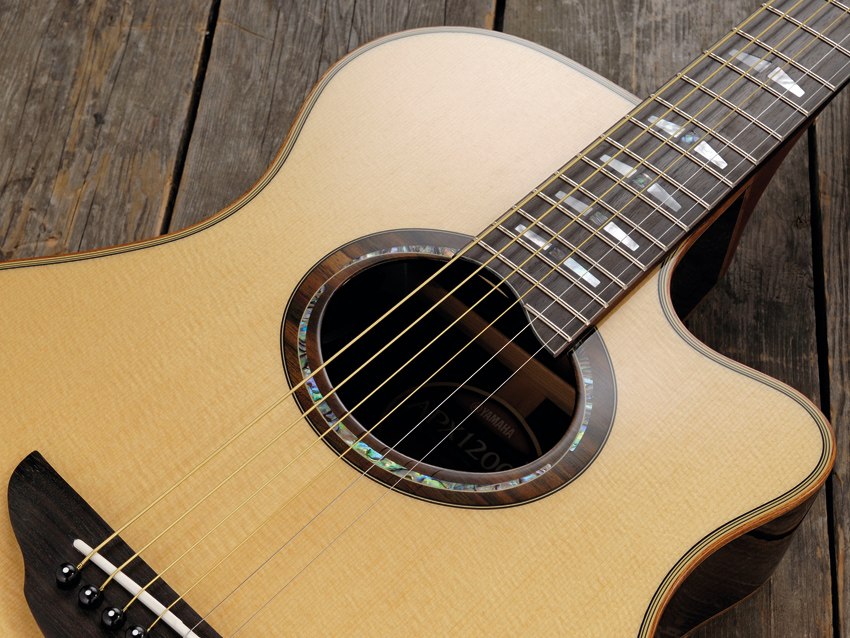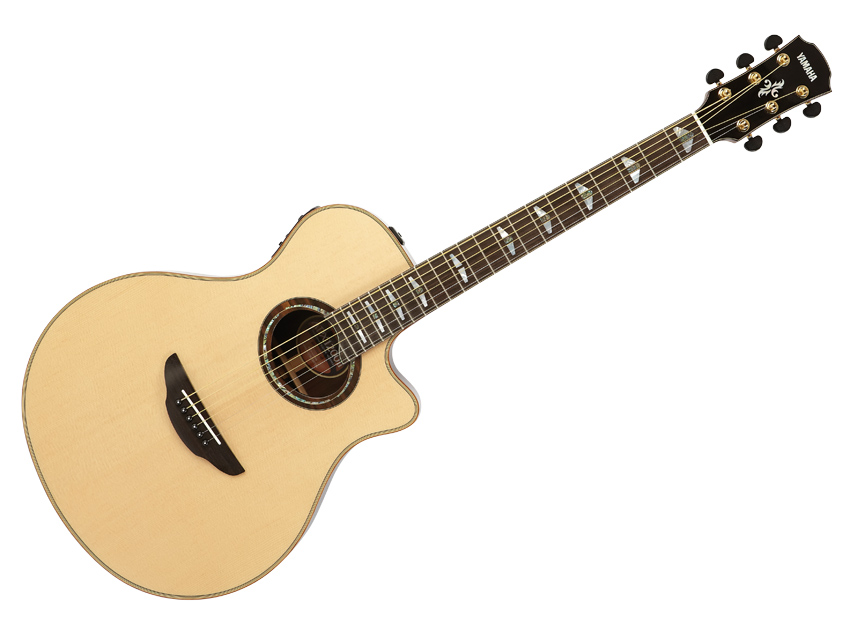MusicRadar Verdict
A comfortable, powerful electro equally at home on stage or in the studio.
Pros
- +
Overall finish; onboard electrics.
Cons
- -
Is it a tad overpriced?
MusicRadar's got your back

Yamaha APX1200II

Yamaha APX1200II
First impressions of the APX are great, across the board. It feels lightweight and comfortable with an excellent out-of-the-box set-up; electric players will adapt easily.
The solid Sitka spruce soundboard is a fine selection featuring a straight, consistent grain, though it doesn't appear to be bookmatched. The solid rosewood back and sides are bound with mahogany and, in the case of the soundboard, finished with three-ply black and white coachlining.
"Plugged in, the APX leaps into life with a punchy, bright 'snap'."
Mahogany has also been used alongside abalone for the soundhole rosette - and very well-finished it is too.
This APX feels well constructed and finished and, although comparatively thin, the guitar's high-gloss finish is well executed.
Sounds
Yamaha's stated purpose for the APX1200II is for plugged-in performance, be it onstage or in the studio. With that in mind, we'd be forgiven for focusing on its electro capabilities, but that would be missing a trick: this is still a good acoustic guitar.
While the APX's lack of body mass does have an effect on its ability to offer a thick, rounded bass, it does project a strong mid-range and the high end is sparklingly clear and bright. Volume and sustain levels are comparatively good bearing in mind the guitar's size - the APX offers an instantly likable and usable acoustic tone.
Plugged in, it leaps into life with a punchy, bright 'snap'. Rolling off the signal from the pickup in favour of the mic models took the slightly metallic-sounding edge off the tone, and further rolling the mids off we were able to warm things up considerably.
The guitar definitely handles dynamics and variations in right-hand techniques with far more precision when plugged in than it does in acoustic mode.
Despite our best efforts at encouragement and plenty of opportunity, the APX resisted feedback - even at full volume - making the supplied rubber feedback-busting soundhole insert redundant. Overall, an impressive performance.
Steve Harvey is senior content producer for Pro Sound News and also contributes to other Future brands. He has worked in the pro audio industry — as a touring musician as well as in live production, installed sound, and equipment sales and marketing — since November 1980.
“For guitarists who crave an unrelenting, aggressive tone that stands out in any mix”: The Fortin Meshuggah head is the amp every metal player wants – now you can get its crushing tones in a pedal
“At least you know I sing live”: Lady Gaga apologises to fans as she falls victim to a mic malfunction during her second weekend set at Coachella
“I got a call saying, ‘Robert Plant is going to call you.’ What?!”: How Alison Krauss made sweet music with the Led Zeppelin legend









